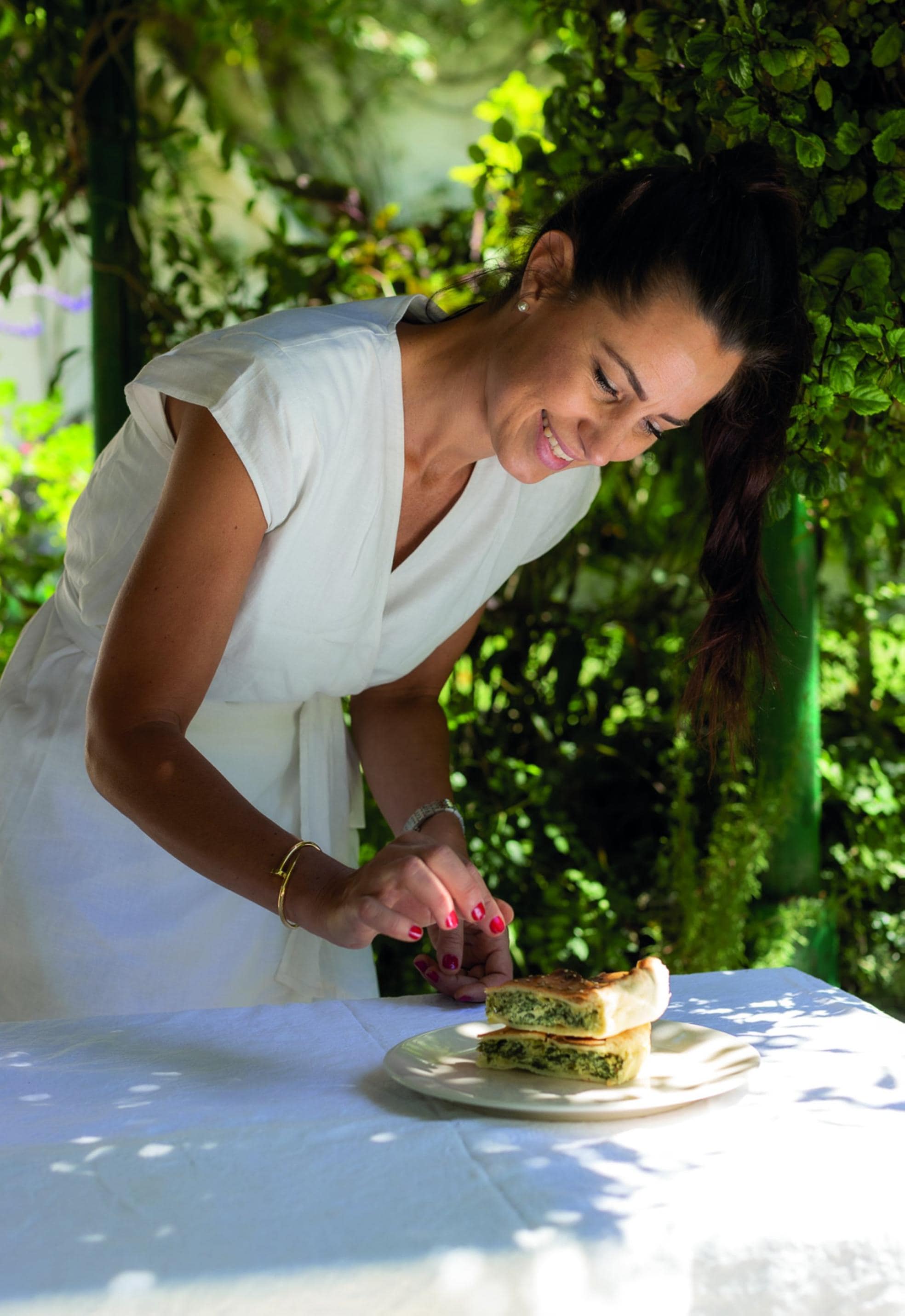Sephardic cuisine, part of a Mediterranean legacy
Gastronomy. ·
The recipes used by Spanish Jews in the time of Al Andalus are brought to life in the book Sefardí by Hélène Jawhara PiñerESPERANZA PELÁEZ
Friday, 7 October 2022, 12:28
Sephardic cuisine is a type of missing link, a hazy imprint in the DNA of Mediterranean and Spanish cooking. Despite this, the recipes that Spanish Jews took with them and adapted and adopted in the parts of France, Italy, North Africa, Greece and Turkey, where they took refuge after being expelled in the 15th century, are still alive and well in traditional cookery books. Historian and cook Hélène Jawhara Piñer has just published one called Sefardí, a beautiful and surprising book based on her six-year research into the cuisine of Spanish Jews in the medieval period for her doctoral thesis. It is surprising how relevant the recipes seem and how many feature in the Spanish cuisine of today.
Curiously, a characteristic combination of medieval Jewish cuisine, which ended up with more than one housewife appearing before the court of the Inquisition, is chickpeas and chard. A very similar dish, chickpeas and spinach, is very popular in Seville today.
And there's more. In the book, Hélène Jawhara comes up with an audacious theory about gazpachuelo, the soup people in Malaga love so much, with a simple recipe consisting of boiled egg white and lemon as part of one of the healthy menus that Maimonides, the great 12th century Jewish doctor from Cordoba, prescribed in his Libro de las Dietas (book of diets). It is not such a far-fetched idea that gazpachuelo could have evolved from the lemon soup.
"If eating this way meant being interrogated by the Inquisition, what would be the point in publishing a book?"
For her book Jawhara, who has French and Spanish nationality, has researched cookery books written in Spain during the Andalusian period (12th, 13th and 14th centuries) and also in medical tracts, records of trials by the Court of the Inquisition and literature of the era, with the same rigour as an archaeologist carefully brushing a recently-excavated piece of stone.
"I thought it necessary to publish a book about Sephardic cuisine on the basis of a scientific study. For centuries, for obvious reasons, there was no written record of Sephardic recipes. If eating aubergines, chickpeas with chard or cooking meat in a certain way could mean you were reported or interrogated by the Inquisition, what would be the sense in publishing a book? But what has been published in recent decades is, mostly, family recipes. I have tried to capture what the cuisine of the Spanish Jews in the medieval period was like," she explains.
She also points out that in medieval Spain there was no such thing as Sephardic cuisine. The term Sephardic began to be used in exile, because Sefarad was the name in Spain. There was a Jewish cuisine in Al Andalus, which in reality was very mixed with Moorish dishes, because both communities came from the same geographical area, but there was a difference in the way the dish was cooked, the celebration for which it was prepared, the ingredients, the source of the meat and wine, and the occasions on which certain dishes were eaten. In Andalusian recipe books only six dishes are described as Jewish-style and they contain partridge, chicken and lamb.
"Many of the recipes I have collected are taken from texts which are not exactly cookery books," she says.
Maybe the most painful source are the reports of the processes at the Court of the Inquisition, which have also been studied by hispanist David Gitlitz for another important book on Judeo-Spanish cuisine, called A Drizzle of Honey.
"For 1,000 years Sephardic cooks lived in marginal enclaves surrounded by cultures which were often hostile, but they maintained the essence of their culinary legacy and it was passed down from mothers to daughters. During the time of the Inquisition, many were burnt at the stake for that," he says.
The Jewish communities in Spain and Portugal had been expelled from Jerusalem and Palestine in the 2nd century. They had been on the peninsula for several generations by the time the Moors arrived, and then when the Catholic monarchs took over many converted to Christianity to avoid being exiled.
"They were the 'crypto-jews' or 'Judaizers', recent converts who maintained their believes and Jewish practices and were greatly persecuted by the Inquisition, and although after the discovery of America they were prohibited from travelling to the New World so they didn't spread their religion, they did go to Mexico, Brazil, Argentina and the Dominican Republic, among other countries," says Hélène Jawhara.
Some constants in Sephardic dishes are the use of olive oil rather than any other fat, aubergine, which became a hated vegetable because it was identified with the Jewish religion, the profusion of vegetables, especially leafy varieties, egg dishes, and the diversity of doughs and breads.
Hélène Jawhara recognises that some recipes in her book are not exclusively from Jewish tradition, but remain part of it such as 'muğabbana' (cheese pies) or the 'isfiriyya' (chickpea omelettes) that she found in 'Kitāb al Tabīh', which also contained possibly the first written recipe for something as popular in the Middle East today as falafels.
And the Jewish recipes have travelled. Take noodles, for example. "Fifteenth-century sources mention noodles as part of Jewish cuisine. They arrived in the Canary Islands from Morocco, where they were made and sold by Jewish families in Fez," she explains.
One recipe in her book is very similar to Malaga noodle stew, or the noodles with mackerel which is often found in Cadiz. Part of Hélène's family comes from there, but apart from that anecdotal aspect, what is important in her book is that where there used to be hardly a trace of Jewish cuisine, it is presented here as a defined image, one which is much more present in our everyday life than anyone may have realised.
When people enjoy cakes like 'pestiños' (or hojuelas o frixuelos), soups, meatballs, fish stews or 'empanada' pasties, perhaps they will now realise that those delicacies bear the imprint of the legacy of a forgotten Spanish community.



